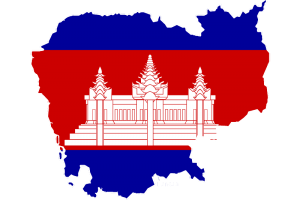Cambodia Raises its Income Tax Threshold
 At the beginning of January, Cambodia reduced the income tax burden on workers in the country. The government has raised its tax threshold from 500,000 riel (US$125) to 800,000 riel (US$200). The previous lowest income tax bracket had begun at 500,000 riel, at a rate of five percent.
At the beginning of January, Cambodia reduced the income tax burden on workers in the country. The government has raised its tax threshold from 500,000 riel (US$125) to 800,000 riel (US$200). The previous lowest income tax bracket had begun at 500,000 riel, at a rate of five percent.
This change puts approximately US$3.75 a month back into the pockets of workers in Cambodia earning over US$200 per month. The change had been announced by Prime Minister Hun Sen in October 2014. Those contracted under a net salary will not be effected.
Hiroshi Suzuki, Chief Economist for the Business Research Institute for Cambodia, has said that the change will assist garment sector workers in securing wages. The alteration is expected by Hun Sen to only deprive the treasury of US$10 million in lost revenues, from an expected US$2.1 billion in revenues in 2015.
![]() RELATED: Cambodian Government Preparing Standardised Tax Reports
RELATED: Cambodian Government Preparing Standardised Tax Reports
According to a Deloitte University Press report, Cambodian tax revenues in 2013 amounted to only five percent of GDP. However, they are on the up; the General Department of Customs and Excise (GDCE) has reported that it earned US$1.34 billion in 2014, a year-on-year increase of 33.5 percent, accounting for 7.8 percent of GDP.
Cambodia’s GDP per capita remains extremely low by international standards; the World Bank estimates that it reached US$1,007 per annum in 2013. Per capita GDP growth slowed from 12.1 percent (2010-2011) to 6.6 percent (2012-2013). This reduced tax burden is a step in the right direction to offset the slowing worker salary growth, but the change remains minor. Much headway has been made in driving down Cambodia’s high poverty levels, and the poverty rate more than halved from 53 percent in 2004 to 20.5 percent in 2011 by World Bank measures, well ahead of its goal of halving poverty by 2015.
In the World Bank Group’s Doing Business 2015: Going Beyond Efficiency, Cambodia ranks 90th of 189 economies for ease of paying taxes, just below the regional East Asia & Pacific average. Cambodia remains ahead of China, Laos, the Philippines, and far ahead of Indonesia. On average, firms in Cambodia make 40 tax payments per year, spending 173 hours filing, preparing and paying taxes. Total taxes amount to 21 percent of profit.
If you would like a customized report on Cambodian taxes, please contact Asia Briefing at: editor@asiabriefing.com
|
Asia Briefing Ltd. is a subsidiary of Dezan Shira & Associates. Dezan Shira is a specialist foreign direct investment practice, providing corporate establishment, business advisory, tax advisory and compliance, accounting, payroll, due diligence and financial review services to multinationals investing in China, Hong Kong, India, Vietnam, Singapore and the rest of ASEAN. For further information, please email asean@dezshira.com or visit www.dezshira.com. Stay up to date with the latest business and investment trends in Asia by subscribing to our complimentary update service featuring news, commentary and regulatory insight. |
Related Reading
 Tax, Accounting, and Audit in Vietnam 2014-2015
Tax, Accounting, and Audit in Vietnam 2014-2015
The first edition of Tax, Accounting, and Audit in Vietnam, published in 2014, offers a comprehensive overview of the major taxes foreign investors are likely to encounter when establishing or operating a business in Vietnam, as well as other tax-relevant obligations. This concise, detailed, yet pragmatic guide is ideal for CFOs, compliance officers and heads of accounting who need to be able to navigate the complex tax and accounting landscape in Vietnam in order to effectively manage and strategically plan their Vietnam operations.
 An Introduction to Tax Treaties Throughout Asia
An Introduction to Tax Treaties Throughout Asia
In this issue of Asia Briefing Magazine, we take a look at the various types of trade and tax treaties that exist between Asian nations. These include bilateral investment treaties, double tax treaties and free trade agreements – all of which directly affect businesses operating in Asia.
 The 2014 Asia Tax Comparator
The 2014 Asia Tax Comparator
In this issue of Asia Briefing Magazine, we examine the different tax rates in 13 Asian jurisdictions – the 10 countries of ASEAN, plus China, India and Hong Kong. We examine the on-the-ground tax rates that each of these countries levy, including corporate income tax, individual income tax, indirect tax and withholding tax. We also examine residency triggers, as well as available tax incentives for the foreign investor and important compliance issues.
- Previous Article Changes to Singapore Transfer Pricing Guidelines
- Next Article ASEAN Exchanges: Myanmar Integrates Further








